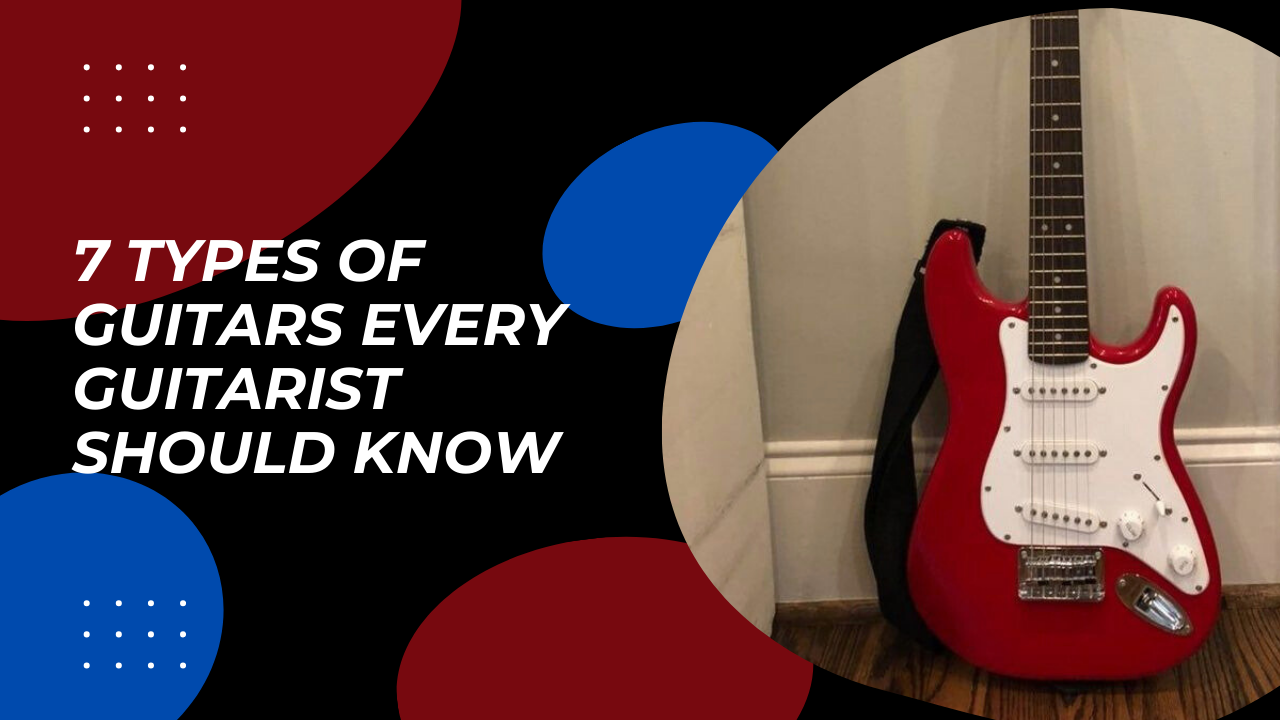For a guitarist, especially a beginner, picking your favourite guitar can be so confusing and overwhelming which can be likened to an excited yet confused child in a toy store.
Knowing fully well that guitars are prevalent in almost every music genre; it is essential to understand what distinguishes a guitar from another. Ranging from the sounds produced from the guitar to its shape, width, and length while also putting the "why?" into consideration.
Here is a simple hack to knowing the basic types of guitars.
1) ACOUSTIC GUITARS
An acoustic guitar is a type of guitar most people are familiar with basically because it is beginner-friendly. It is one of the guitars that has remained literally unchanged since it existed.
It has a hollow wooden body which allows the loud projection of sounds coupled with a thick neck to support the tension produced from the six heavy strings. Some are made with steel strings which are ideal for blues, country, folk, and rock genres of music.
The major types are Dreadnoughts and Jumbo which give up booming sounds while Auditorium and Parlor are quieter.
Acoustic guitars are the go-to guitar for beginners and for songwriters who need guitars while working on their songs.
2) ELECTRO-ACOUSTIC GUITARS
An electro-acoustic guitar is more or less an acoustic guitar with an in-built microphone that can be connected to an amplifier or a PA system. It is like connecting an ordinary acoustic guitar to an amplifier to produce a louder sound.
It is fantastic for newbie performers, especially in a live show, since it saves you the stress of putting a mic near the guitar. Another advantage is that it can be used with recording equipment to record sounds
3) ELECTRIC GUITARS
The electric guitar usually has six strings with magnetic pickups underneath and is ofttimes made of wood. It has a solid body and does not produce much sound unless plugged into an amplifier. To alter the sound for more creativity and uniqueness, electric guitars can be clubbed with effect pedals to audio signals.
It comes in varieties although the common models are Gender Telecaster, Gibson Les Paul, and the Fender Stratocaster.
The electric guitar is better used by professionals seeking powerful sounds or wanting a greater choice of sounds for creativity.
4) SEMI-ACOUSTIC GUITARS/ HOLLOW BODY GUITARS
Semi-acoustic guitar seamlessly bridges the gap between electric guitars and acoustic guitars. It has a thin body similar to electric guitars so won't produce a very loud sound unless plugged into an amplifier but has a hollow body like acoustic guitars so it still makes a hearable sound even when unplugged.
The semi-acoustic guitar is ideal for players looking for versatility in combining electric and acoustic guitar; not advisable for someone seeking to be a master of a specific type of sound.
5) BASS GUITARS
A bass guitar has four big and thick strings for producing deep and low bass sounds. They are usually electric although acoustic or semi-acoustic bass guitars can be found too.
A bass guitar is suitable for players in a band especially for people who love forming rhythm with the drummer. It is not ideal for solo players because of its low vibrations.
The most recognized bass guitars are Fender Precision, Rickenbacker 4001, and Hofner Violin Bass.
6) CLASSICAL GUITARS
Classical guitars are also known as Spanish guitars and are much like acoustic guitars but rather made with nylon strings instead of steel.
They were initially used to play classical songs or flamenco music but are now used to play other types of music especially Jazz
The flexibility in size, sound, and price makes it common among beginners or maybe it is important because it doesn't cause calluses on fingertips.
7) RESONATOR GUITARS
This is a unique type of acoustic guitar known for its production of distinct sounds.
It has metal cones in front of the guitar instead of a wooden soundboard which accounts for its loud and distinct sounds.
It is used by lovers of the blues and folk types of music.
All of the above are the best which is, however, dependent on your personal preference, feels, tones, and genres of music.
